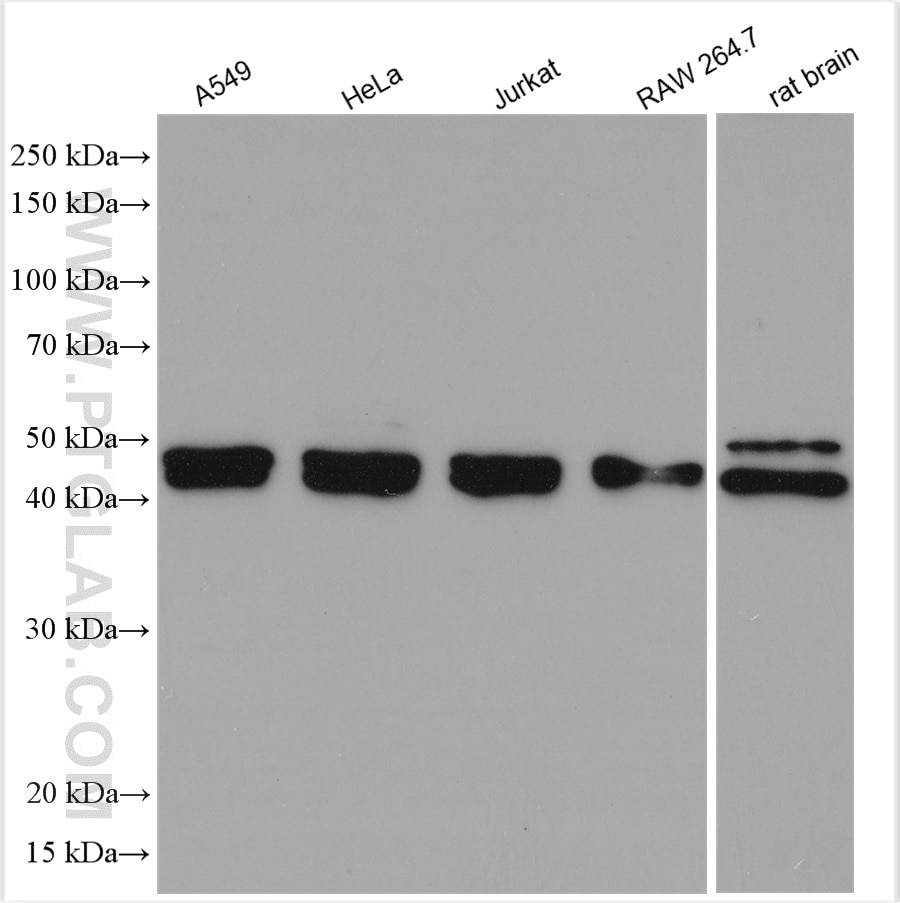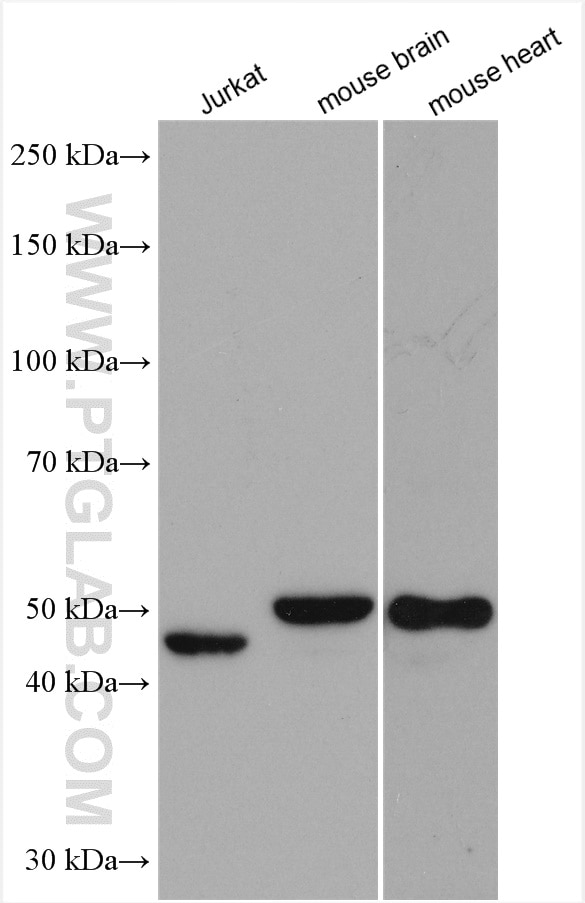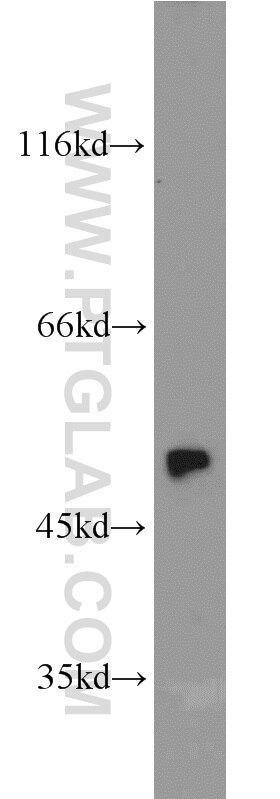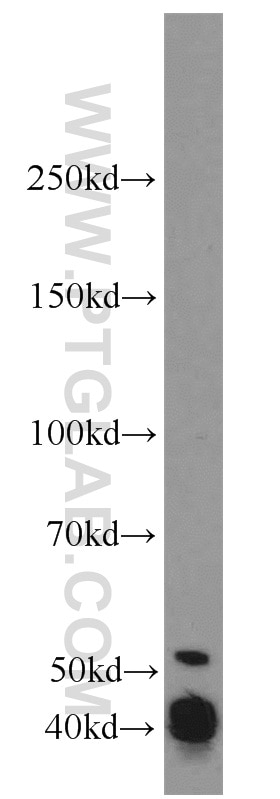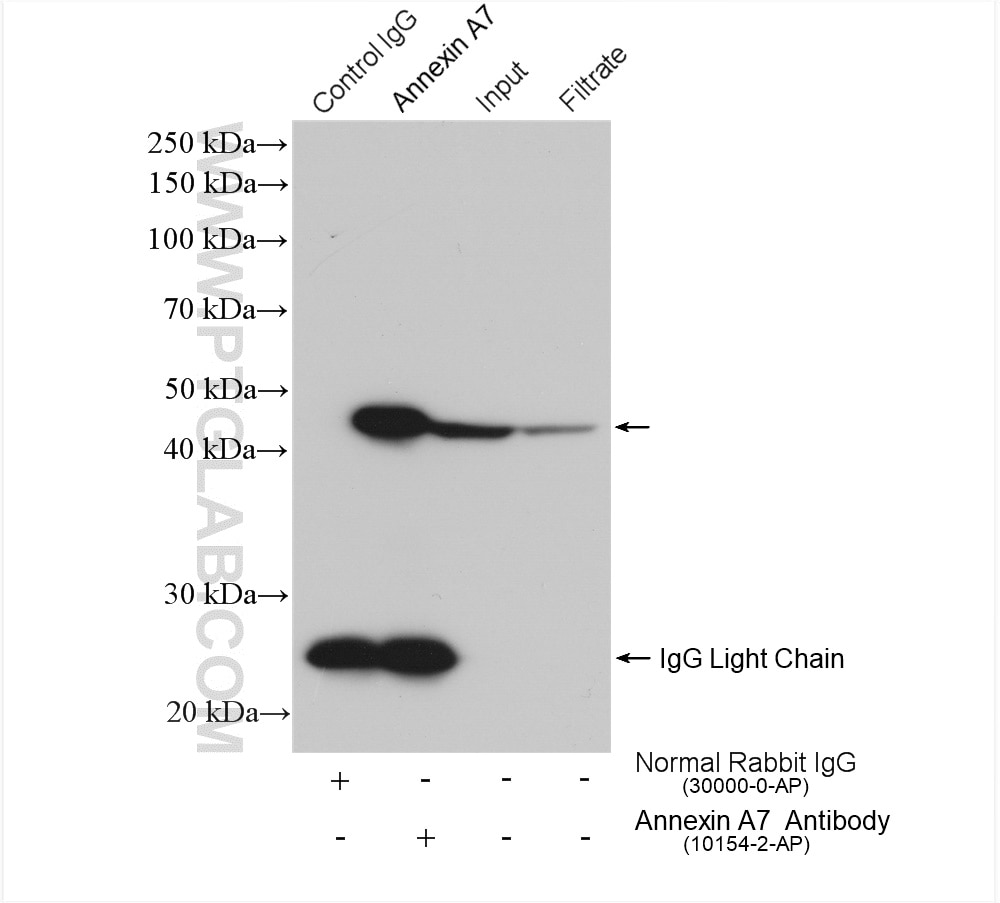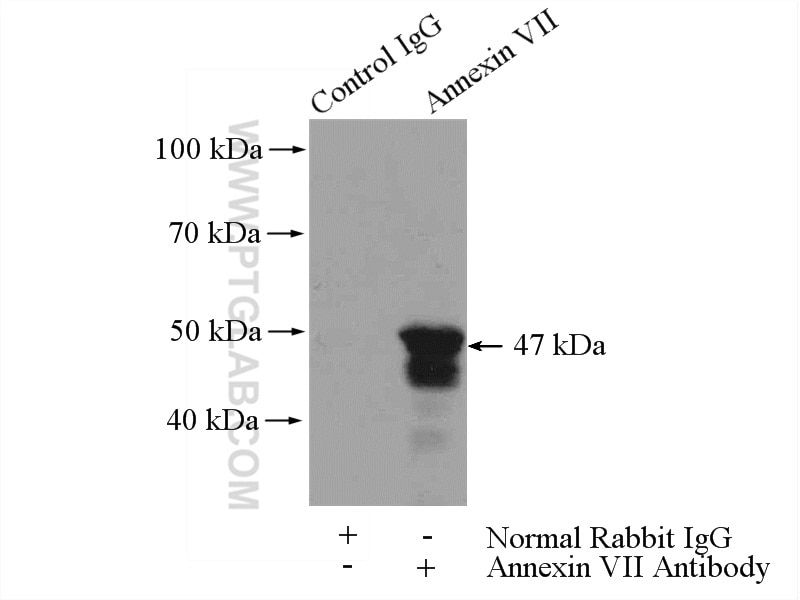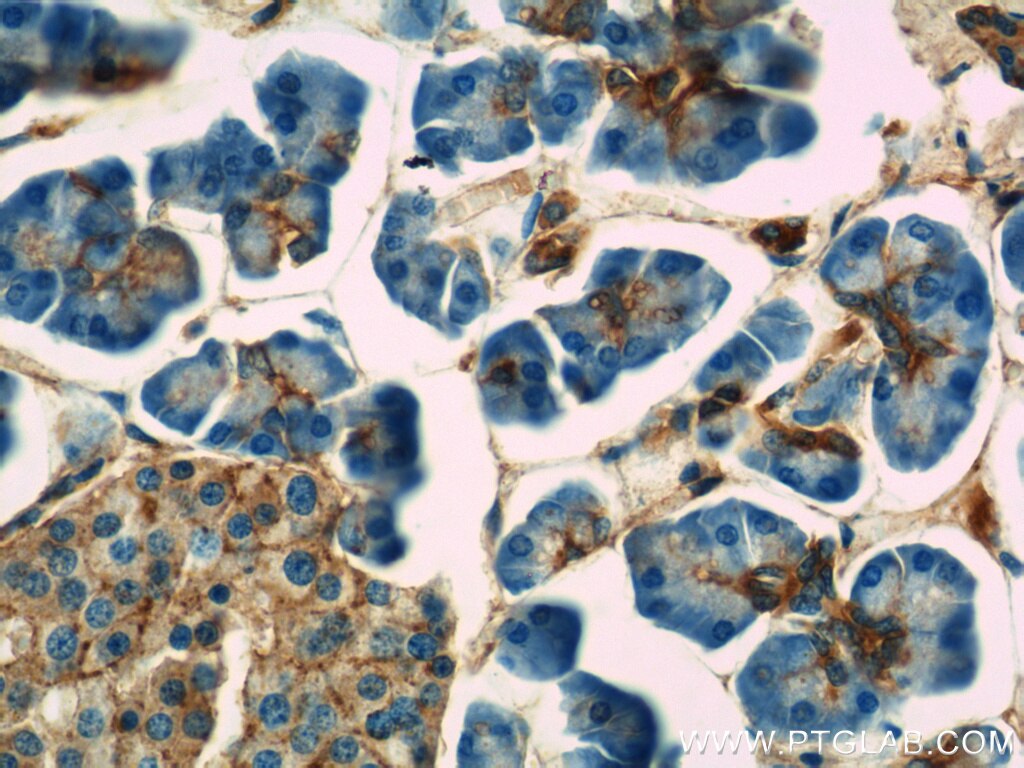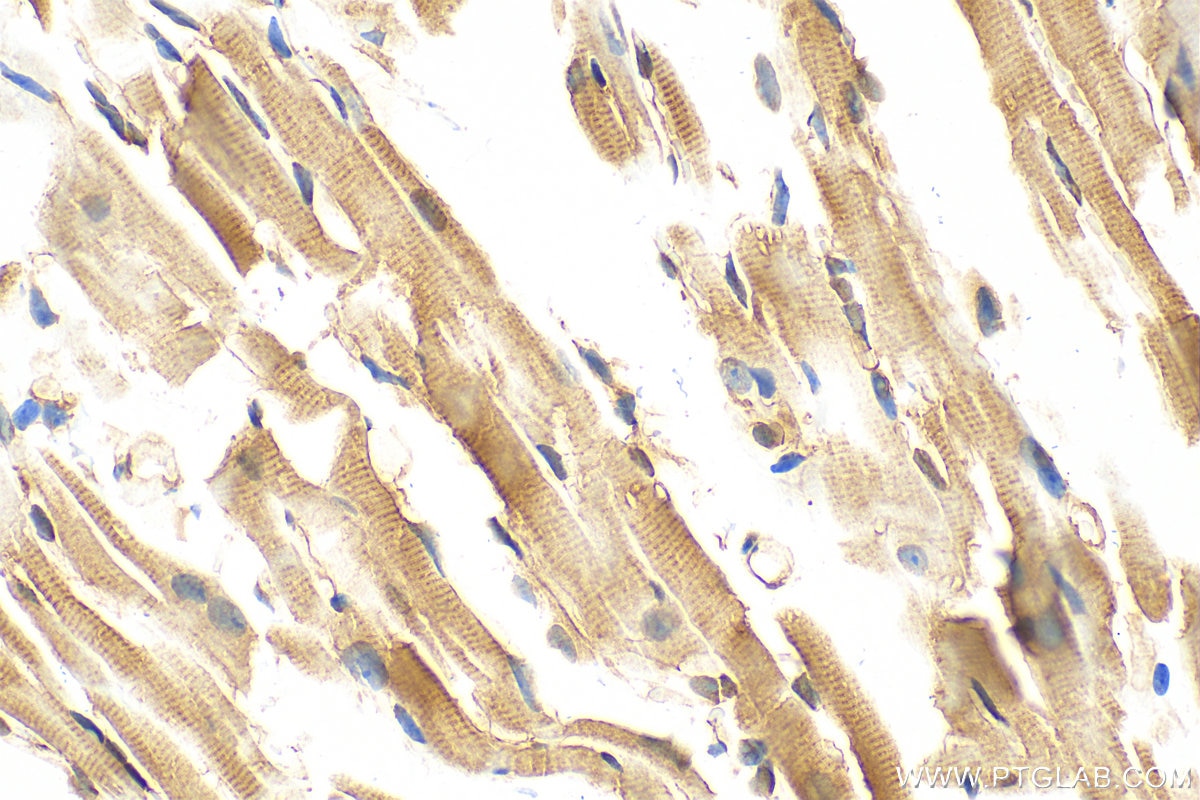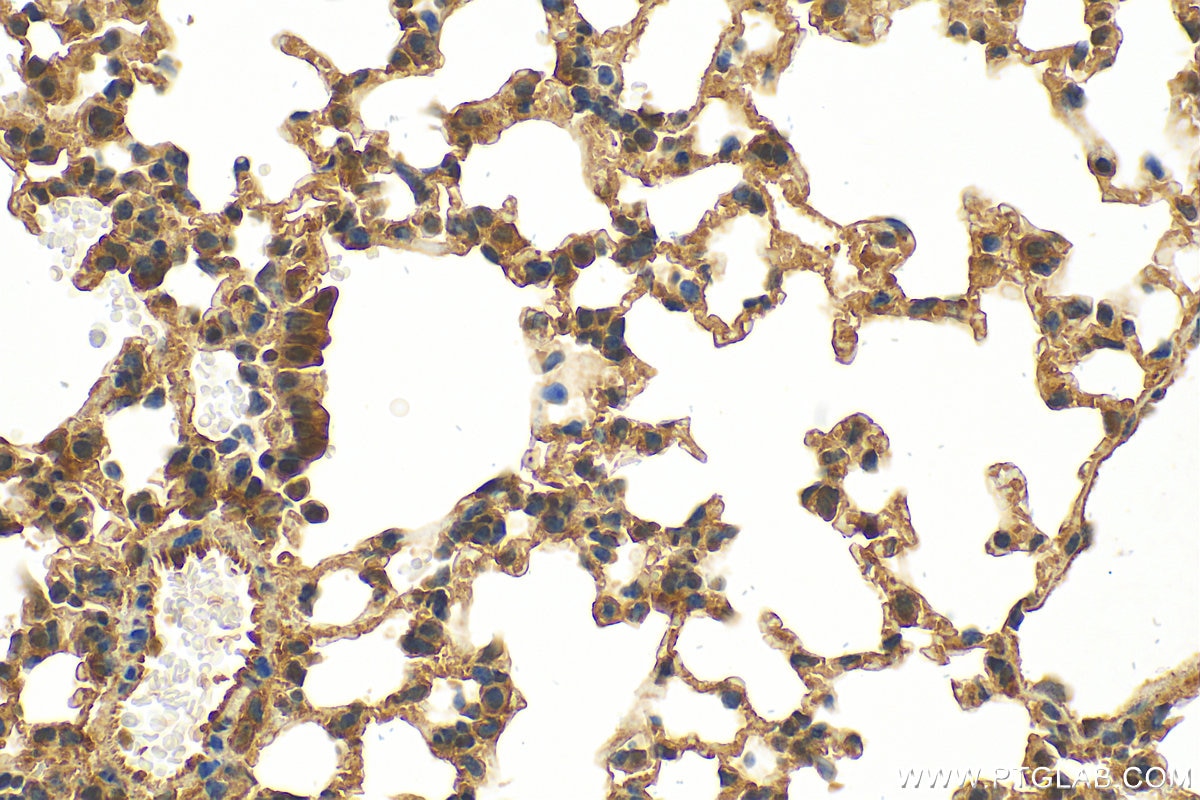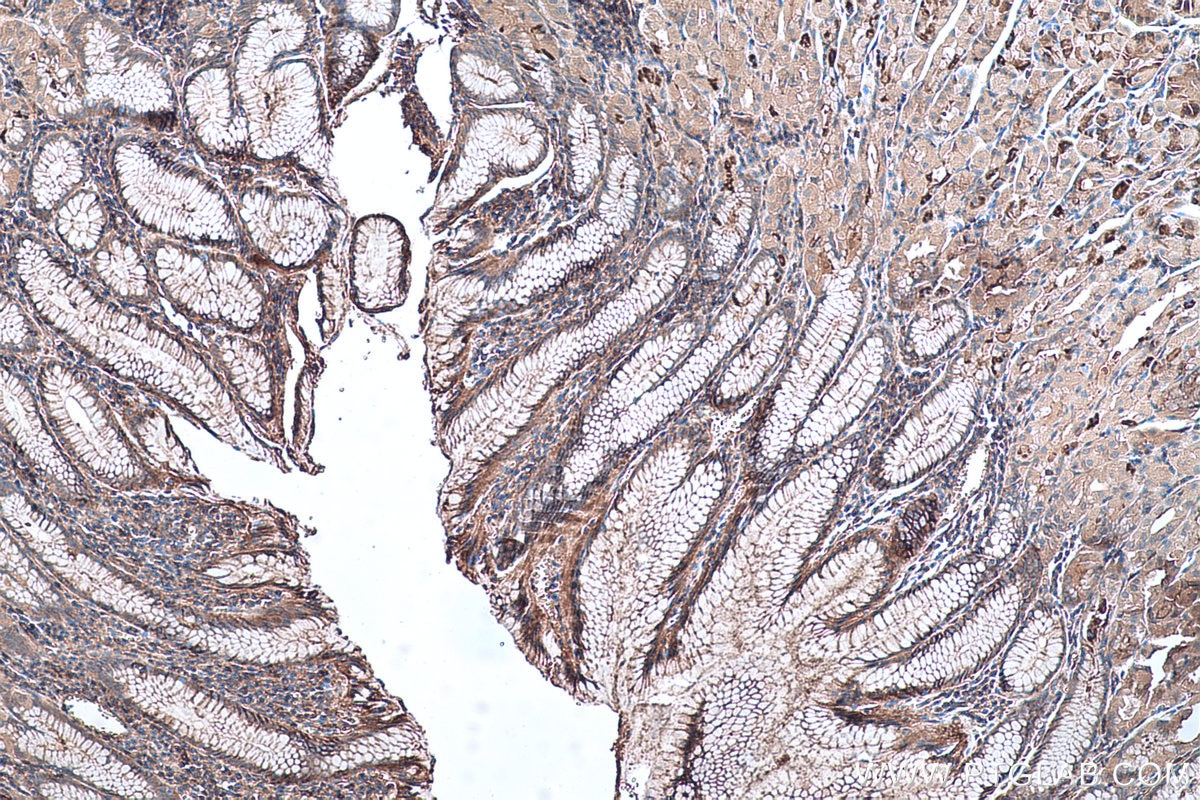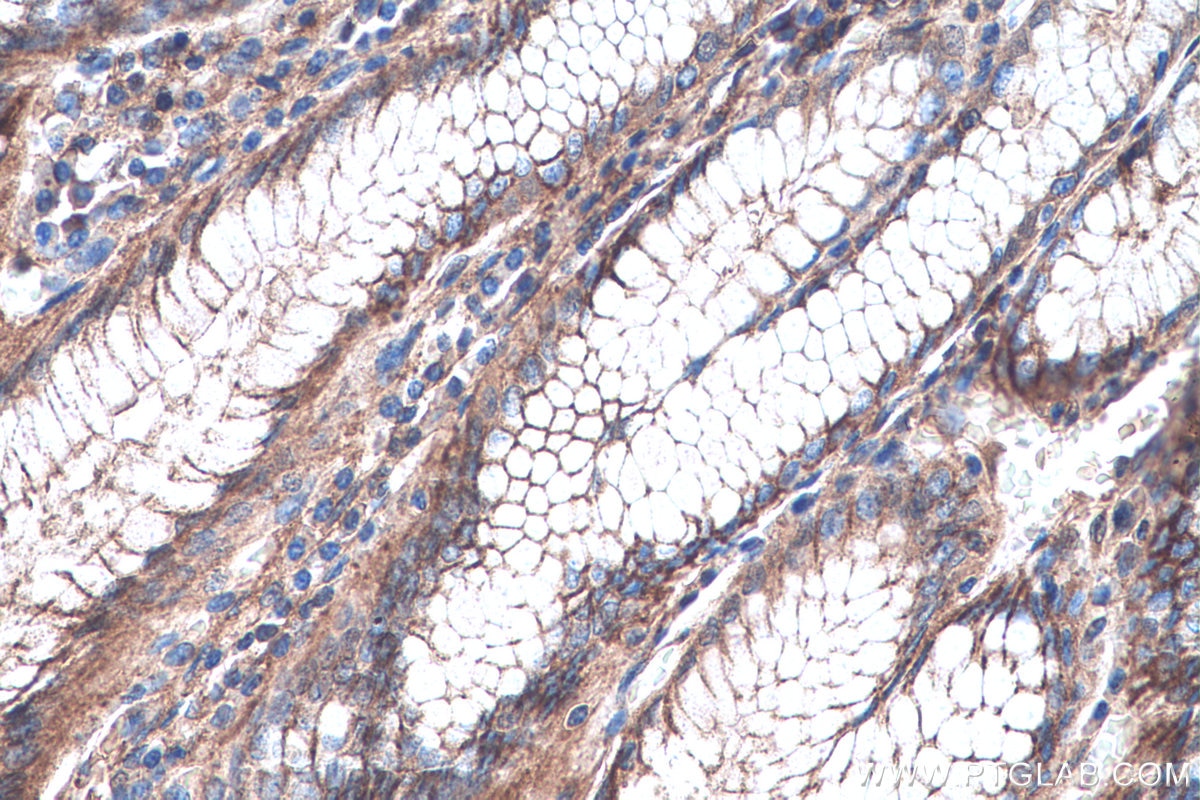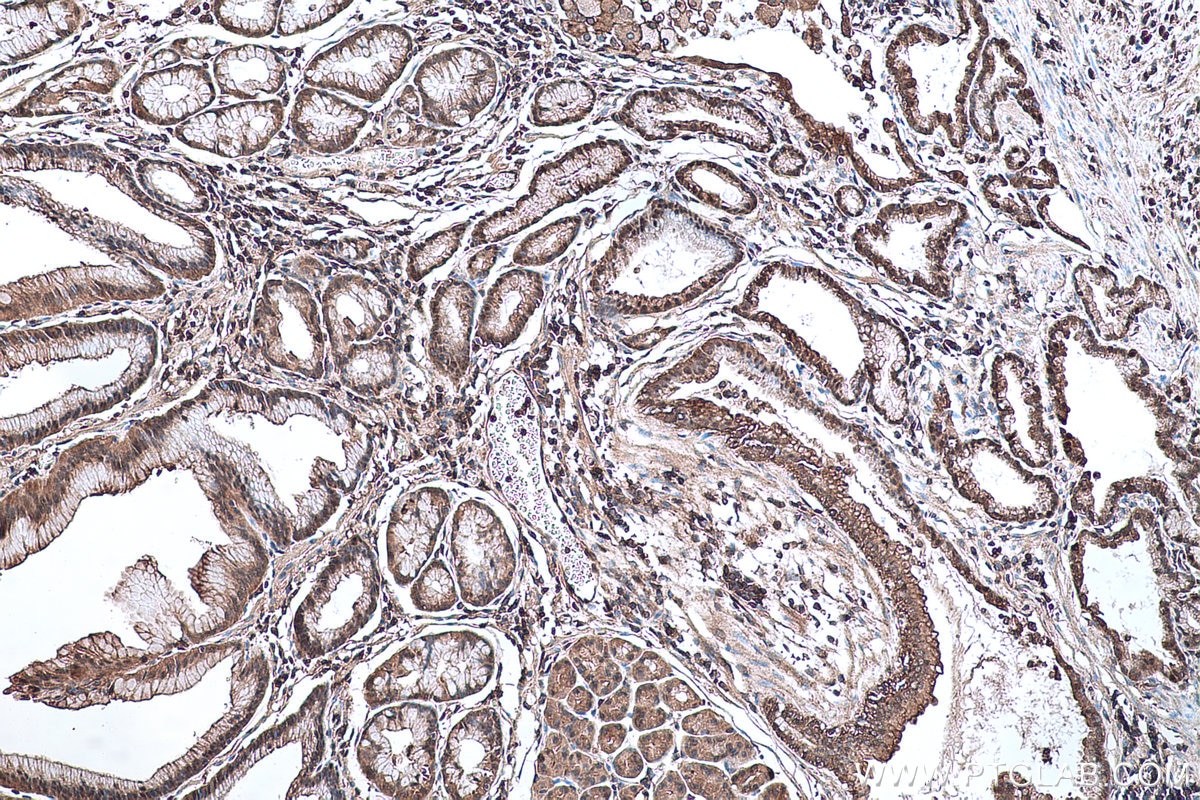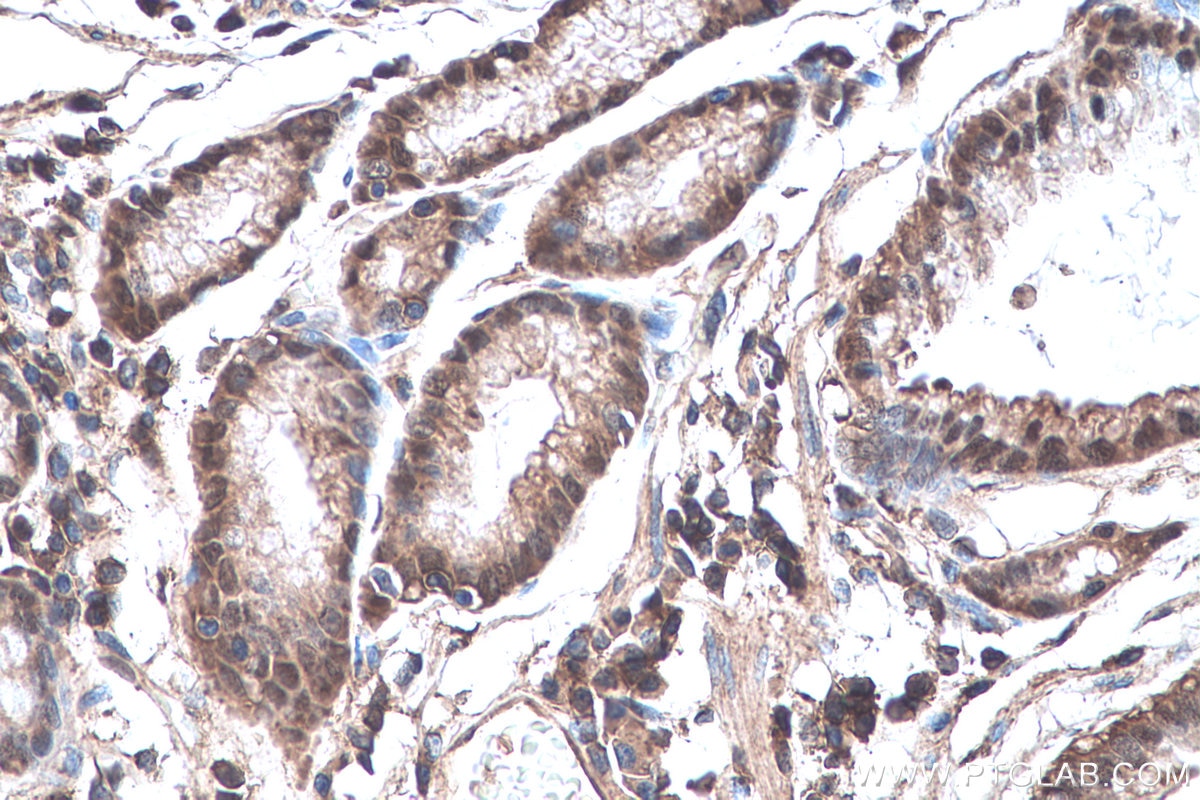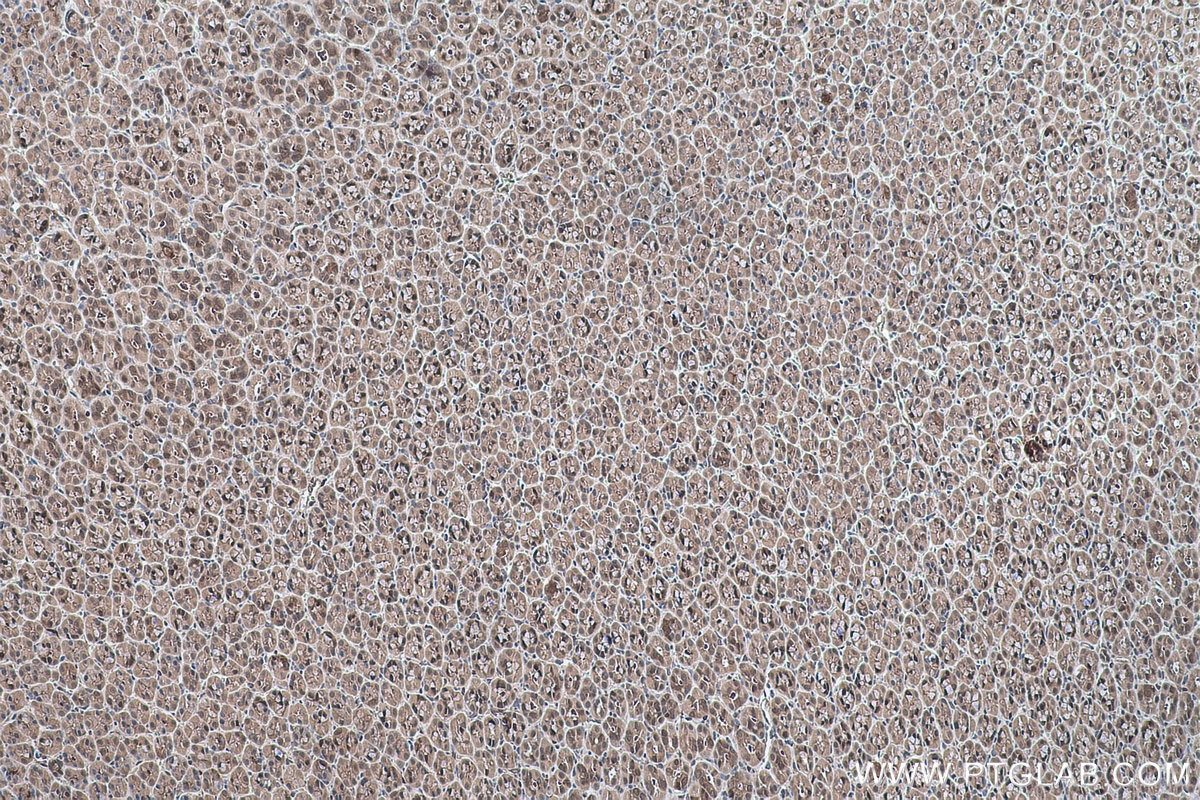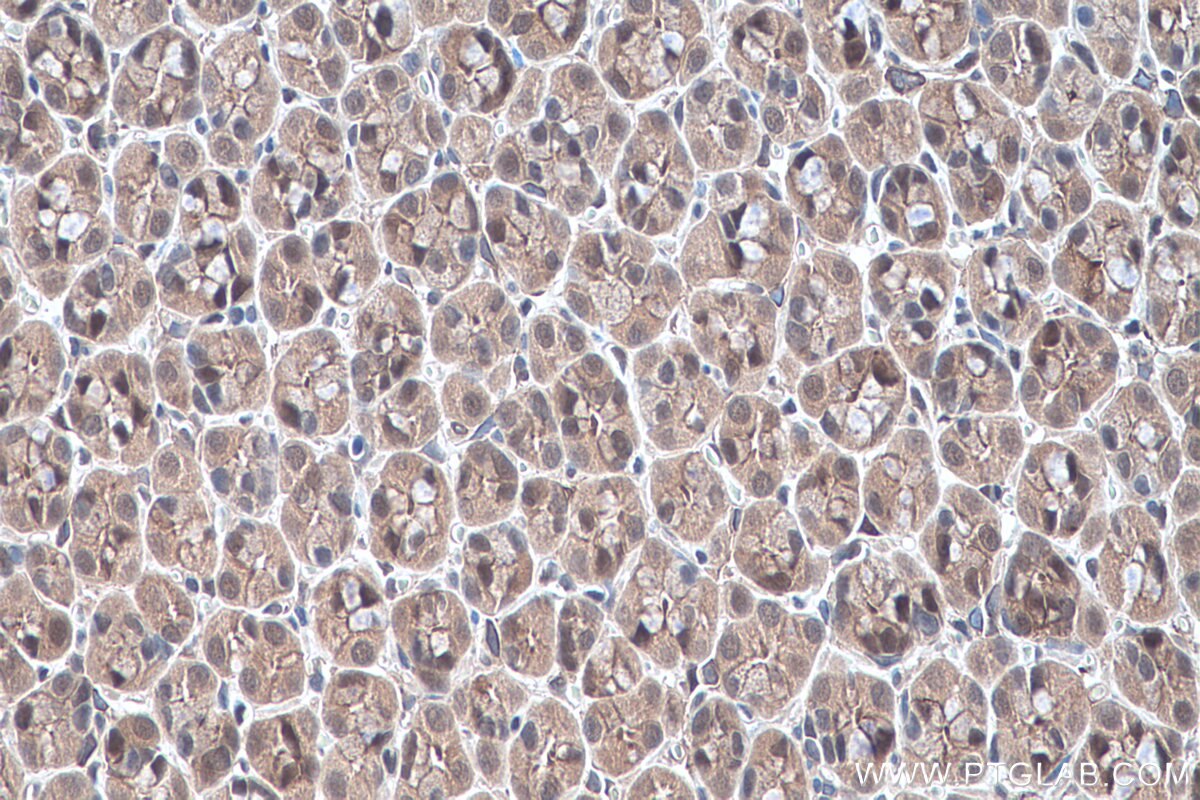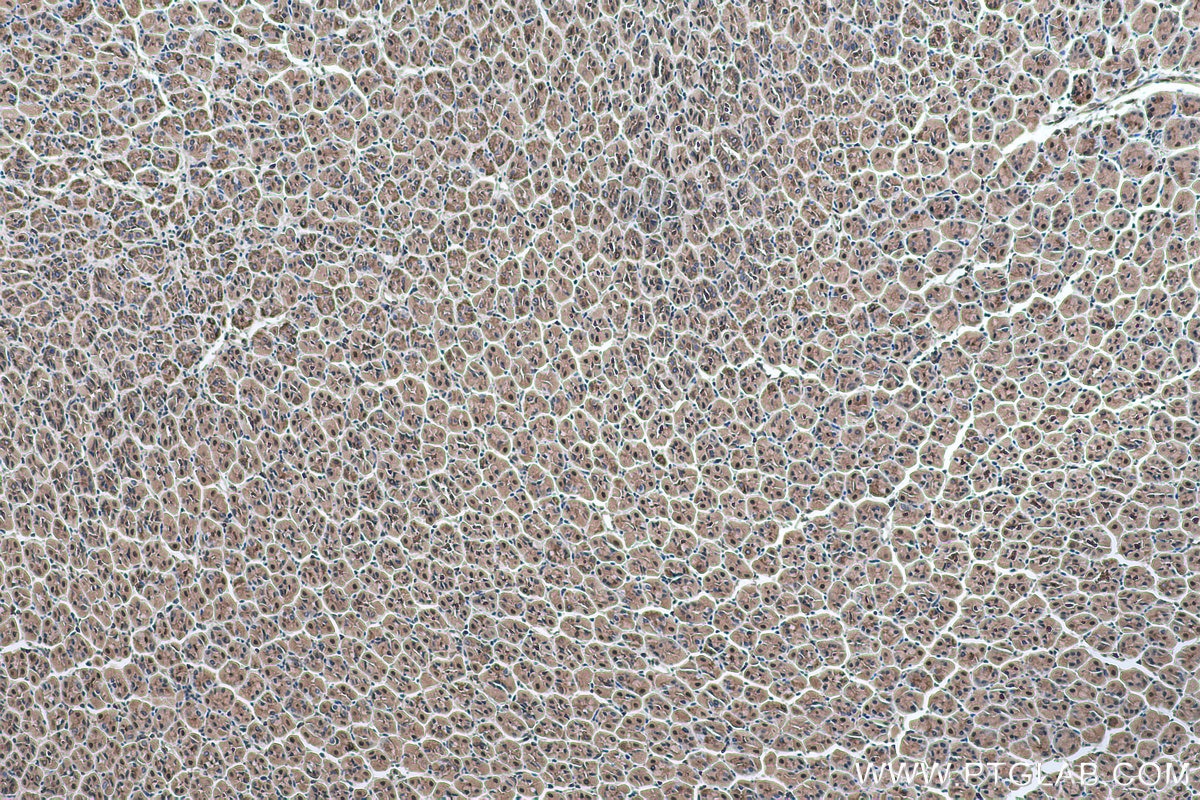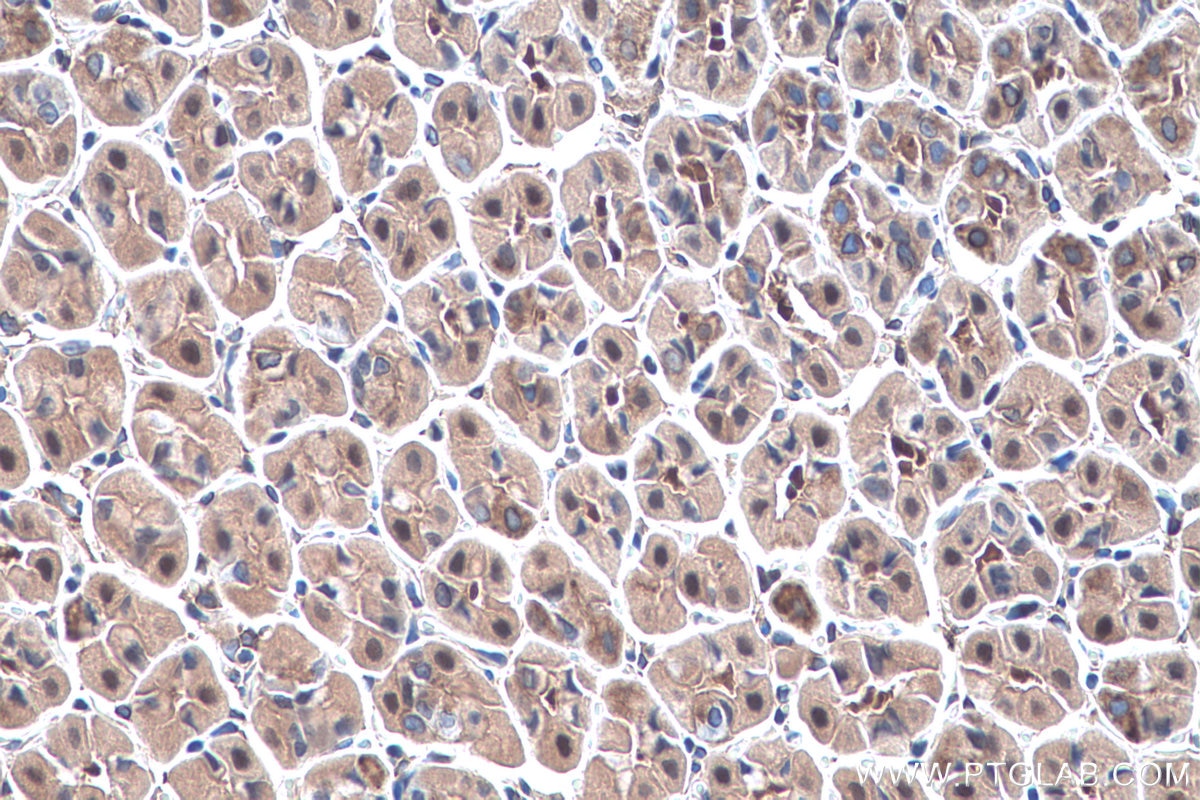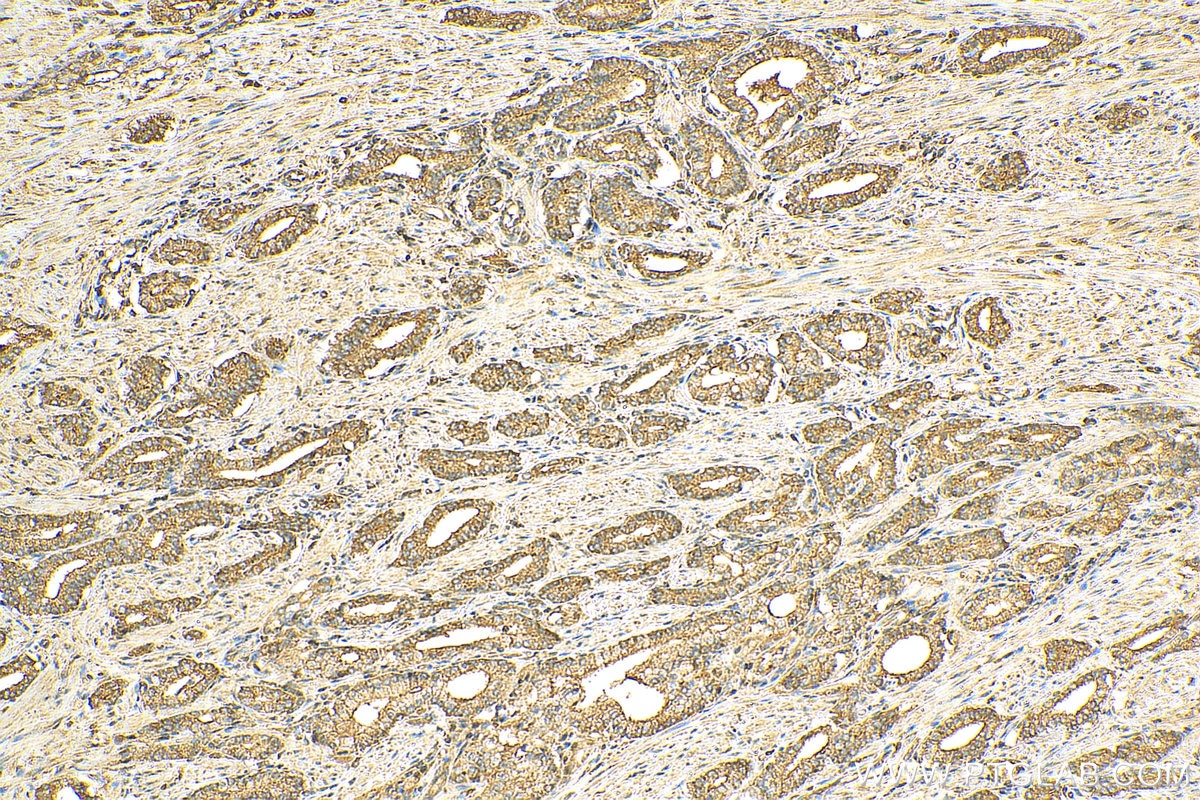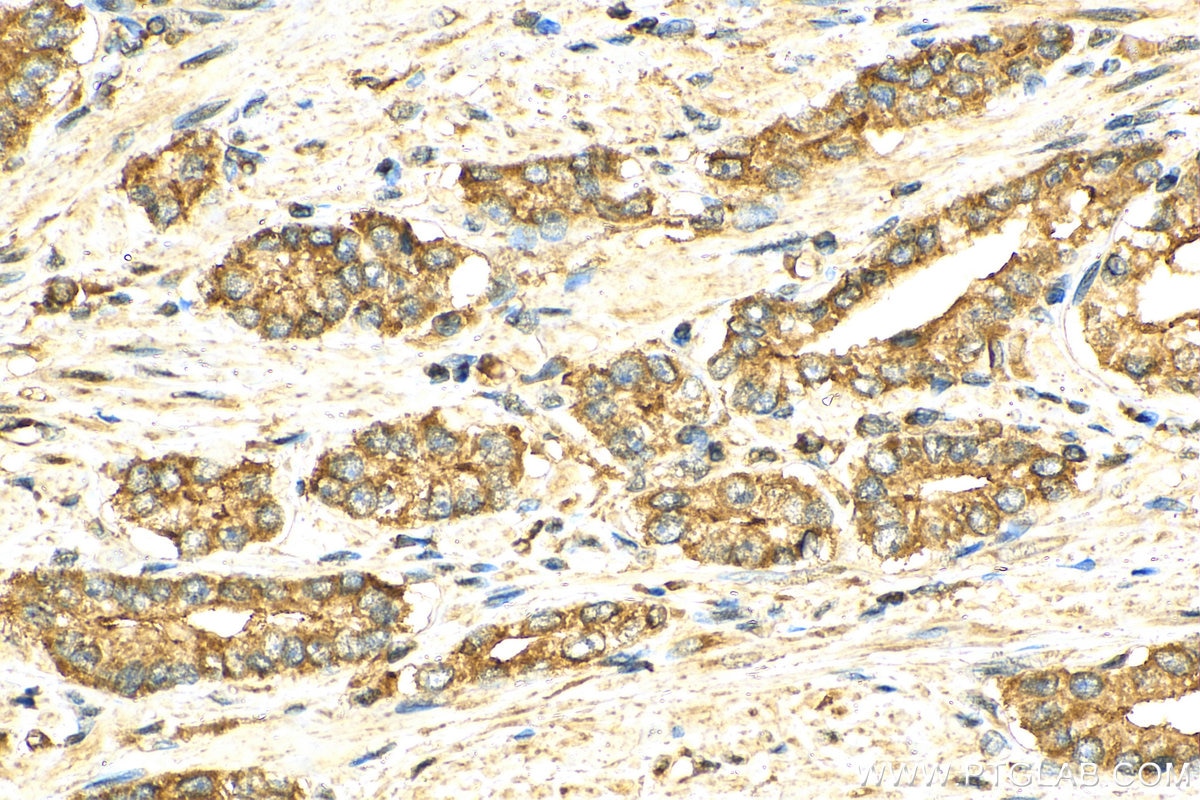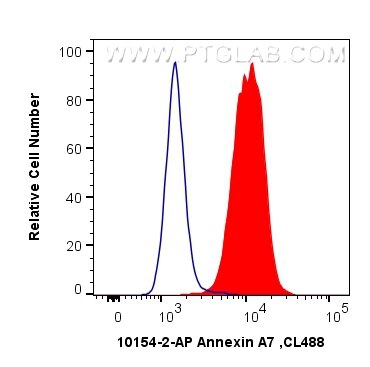- Phare
- Validé par KD/KO
Anticorps Polyclonal de lapin anti-Annexin A7
Annexin A7 Polyclonal Antibody for WB, IHC, FC (Intra), IP, ELISA
Hôte / Isotype
Lapin / IgG
Réactivité testée
Humain, rat, souris
Applications
WB, IHC, FC (Intra), IP, ELISA, IF
Conjugaison
Non conjugué
N° de cat : 10154-2-AP
Synonymes
Galerie de données de validation
Applications testées
| Résultats positifs en WB | cellules A549, cellules HeLa, cellules Jurkat, cellules L02, cellules RAW 264.7, tissu cardiaque de souris, tissu cérébral de rat, tissu cérébral de souris, tissu pulmonaire de souris |
| Résultats positifs en IP | cellules MG U-87, tissu cardiaque de souris |
| Résultats positifs en IHC | tissu cardiaque de souris, tissu de cancer de la prostate humain, tissu de cancer de l'estomac humain, tissu d'estomac de rat, tissu d'estomac de souris, tissu d'estomac humain, tissu pancréatique humain il est suggéré de démasquer l'antigène avec un tampon de TE buffer pH 9.0; (*) À défaut, 'le démasquage de l'antigène peut être 'effectué avec un tampon citrate pH 6,0. |
| Résultats positifs en FC (Intra) | cellules SH-SY5Y, |
Dilution recommandée
| Application | Dilution |
|---|---|
| Western Blot (WB) | WB : 1:2000-1:16000 |
| Immunoprécipitation (IP) | IP : 0.5-4.0 ug for 1.0-3.0 mg of total protein lysate |
| Immunohistochimie (IHC) | IHC : 1:200-1:800 |
| Flow Cytometry (FC) (INTRA) | FC (INTRA) : 0.40 ug per 10^6 cells in a 100 µl suspension |
| It is recommended that this reagent should be titrated in each testing system to obtain optimal results. | |
| Sample-dependent, check data in validation data gallery | |
Applications publiées
| KD/KO | See 2 publications below |
| WB | See 9 publications below |
| IHC | See 3 publications below |
| IF | See 3 publications below |
Informations sur le produit
10154-2-AP cible Annexin A7 dans les applications de WB, IHC, FC (Intra), IP, ELISA, IF et montre une réactivité avec des échantillons Humain, rat, souris
| Réactivité | Humain, rat, souris |
| Réactivité citée | Humain, souris |
| Hôte / Isotype | Lapin / IgG |
| Clonalité | Polyclonal |
| Type | Anticorps |
| Immunogène | Annexin A7 Protéine recombinante Ag0206 |
| Nom complet | annexin A7 |
| Masse moléculaire calculée | 50 kDa |
| Poids moléculaire observé | 47 kDa, 51 kDa |
| Numéro d’acquisition GenBank | BC002632 |
| Symbole du gène | Annexin A7 |
| Identification du gène (NCBI) | 310 |
| Conjugaison | Non conjugué |
| Forme | Liquide |
| Méthode de purification | Purification par affinité contre l'antigène |
| Tampon de stockage | PBS avec azoture de sodium à 0,02 % et glycérol à 50 % pH 7,3 |
| Conditions de stockage | Stocker à -20°C. Stable pendant un an après l'expédition. L'aliquotage n'est pas nécessaire pour le stockage à -20oC Les 20ul contiennent 0,1% de BSA. |
Informations générales
Annexin A7 (Anx7) belongs to a ubiquitous and relatively abundant family of Ca2+-dependent membrane-binding proteins, which are thought to be involved in multiple aspects of cell biology including membrane trafficking, mediation of cell-matrix interactions and membrane organization within cells. Anx7, migrated as a 50 kDa protein in SDS-PAGE, has been proposed to function in the fusion of vesicles, acting as a Ca++ channel and as Ca++ -activated GTPase, thus inducing Ca++ /GTP-dependent secretory events.
Protocole
| Product Specific Protocols | |
|---|---|
| WB protocol for Annexin A7 antibody 10154-2-AP | Download protocol |
| IHC protocol for Annexin A7 antibody 10154-2-AP | Download protocol |
| IP protocol for Annexin A7 antibody 10154-2-AP | Download protocol |
| Standard Protocols | |
|---|---|
| Click here to view our Standard Protocols |
Publications
| Species | Application | Title |
|---|---|---|
Matrix Biol Proteome-wide and matrisome-specific atlas of the human ovary computes fertility biomarker candidates and open the way for precision oncofertility. | ||
Am J Physiol Endocrinol Metab Differential expression of the regulated catecholamine secretory pathway in different hereditary forms of pheochromocytoma. | ||
J Proteome Res Quantitative Mitochondrial Proteomics Reveals ANXA7 as a Crucial Factor in Mitophagy.
| ||
Am J Transl Res Downregulation of annexin A7 decreases proliferation, migration, and invasion of gastric cancer cells by reducing matrix metalloproteinase 1 and 9 expression. | ||
Biofactors Ezrin as a possible diagnostic and/or prognostic biomarker in mice lymphatic metastatic hepatocellular carcinoma in vivo. | ||
FEBS Lett Annexins A1 and A2 are recruited to larger lysosomal injuries independently of ESCRTs to promote repair. |
